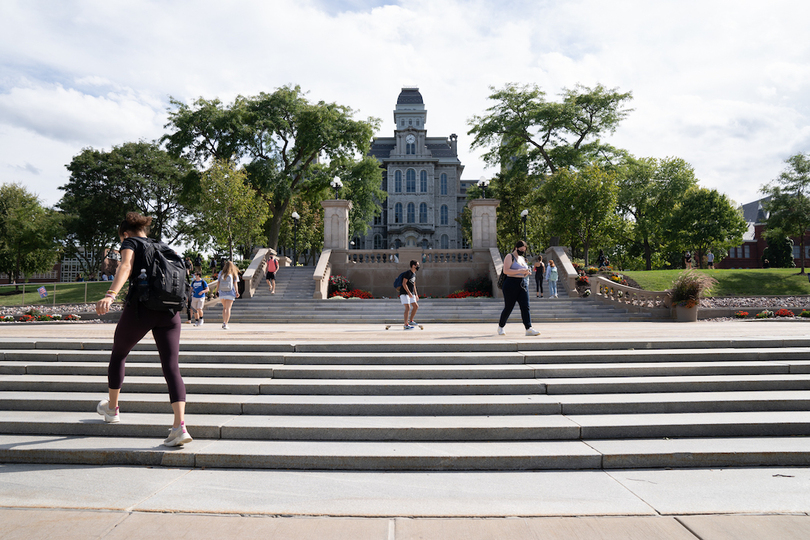Social media activism is on the rise. But some posts need trigger warnings.

Emily Steinberger | Photo Editor
The Daily Orange is a nonprofit newsroom that receives no funding from Syracuse University. Consider donating today to support our mission.
News that doesn’t make it to mainstream television is often shifted onto popular platforms such as Facebook and Instagram, making it easier for users to see traumatic images of social issues such as the Uighur crisis in China to the civil war in Yemen. Though users may have good intentions when sharing graphic social media posts, people across all platforms need to be diligently aware that such content can often trigger impacted audiences.
Whenever I went on social media this year, I was bombarded with videos of Black people being attacked and unjustly treated. It was unbearable, to say the least, and I would log off social media for days. My friends mentioned doing the same.
As an international student a thousand miles away from the United States, I felt helpless, and I thought the least I could do was post. It still felt slightly useless, and the guilt of not being able to do anything flooded my mind. I was traumatized by viewing these graphic videos and reading the stories that went with them.
“It is the idea of secondary trauma,” said Stefanie Pilkay, an assistant professor of social work in Falk College. “You could experience trauma, reactions and responses because you become immersed in the story.”
It’s also easy to forget that sharing stories of sexual assault online can trigger survivors and bring back past trauma. Exposure to such graphic stories of injustice and violence can contribute to post-traumatic stress disorder, even vicariously.
Being exposed to graphic stories frequently can lead to “trauma porn,” or the desensitization and normalization of viewing traumatizing events. And COVID-19 isn’t helping. The combination of isolation and trauma porn is negatively affecting our mental health, as the need to use social media to stay connected to people in our lives means we’re even more exposed to these graphic stories and events. This overuse of social media is only adding to the existing mental stress of isolation and quarantine.
But there can be upsides to posting about social issues. Social media helped users worldwide become aware of protests happening across the world, such those in Thailand and Poland.
“There was so much going on here in the United States because of the election, but because of social media, that then became a global awareness, which modifies people’s behavior,” Pilkey said.
The globalization of social media has helped shed light on many issues, allowing people to have conversations and come up with solutions. In Brunei, international outrage led to its death penalty for gay sex being overturned.
Sharing graphic stories has mixed results. Without these stories, we run the risk of not educating people on what is happening outside of the American bubble. In certain circumstances, we can only advance a cause by sharing it on social media. But it’s important to recognize that posting online may come at the expense of some individuals’ mental health.
“What we can do to tackle such issues would be to make people aware that there is help and provide information on resources. Social media is like a double-edged sword,” Pilkey said.
In bringing light to the global issues occurring during this pandemic, we need to consider the mental health of people already being impacted by these issues. It’s understandable to want to help. But it’s also necessary to take a step back and recognize that there are people among us whom we should actively support in alternative ways.
Sourov Rayhan is a sophomore English major. Their column appears bi-weekly. He can be reached at srayhan@syr.edu.





